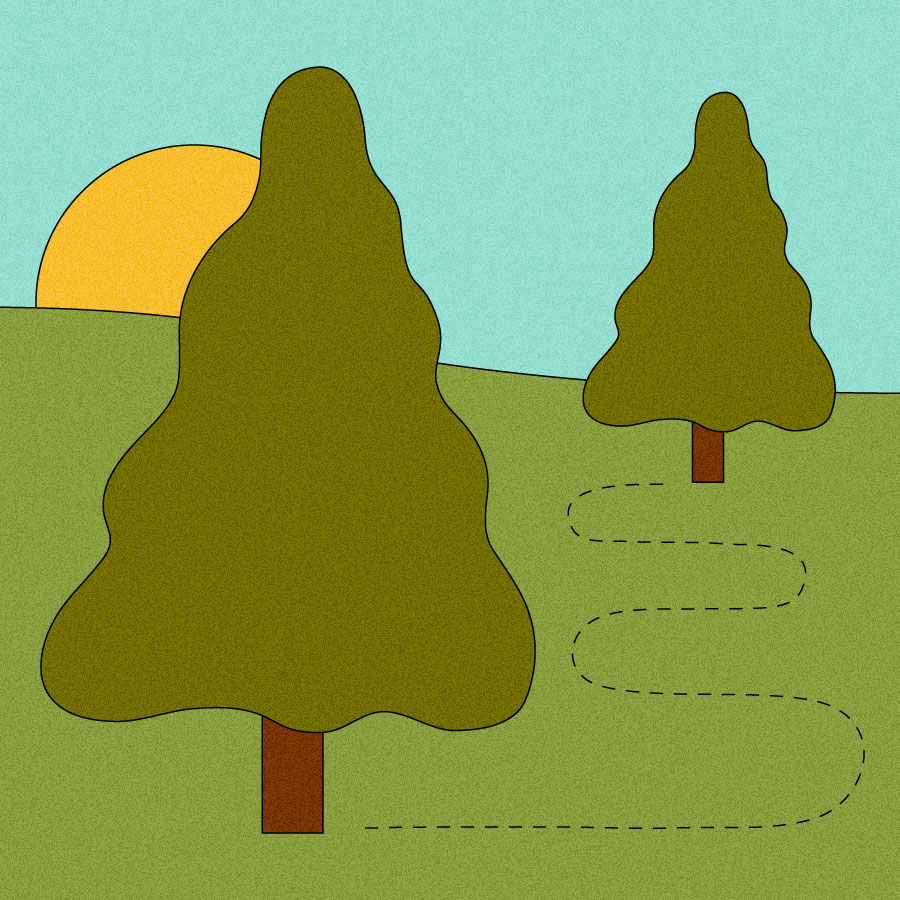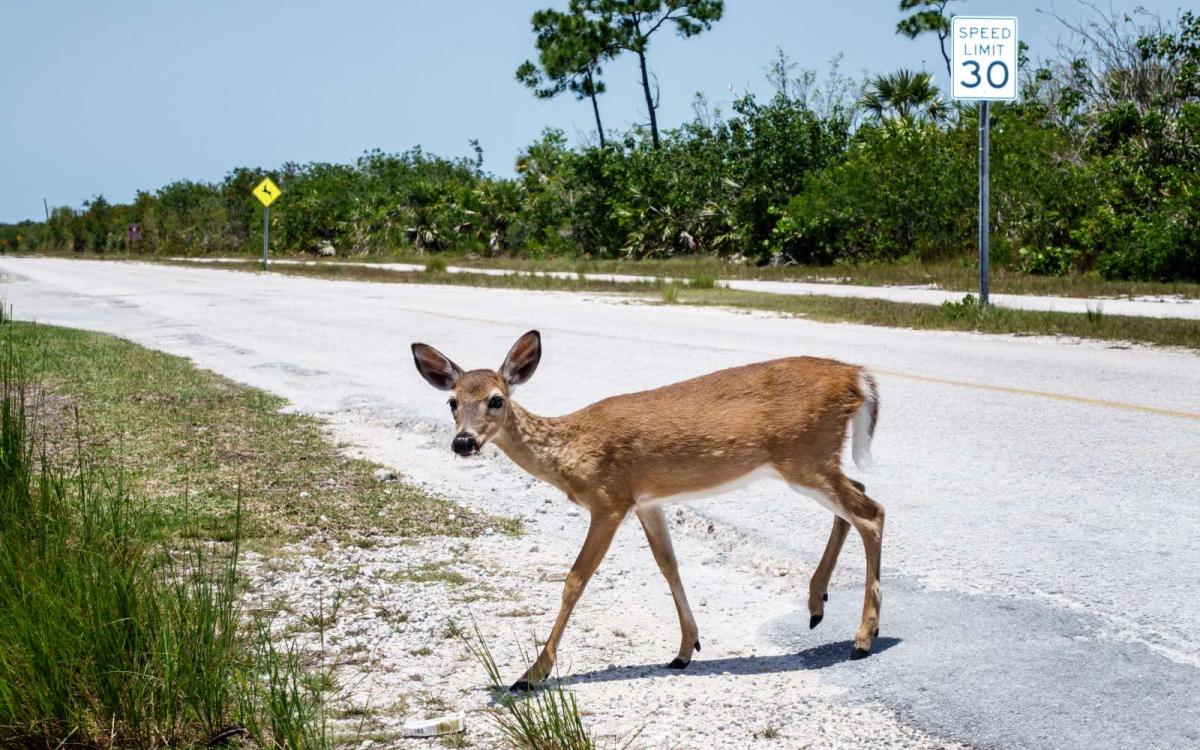
The vision
The old tree spoke:
Burr of blade and crash of trunk broke embraces held for centuries. My grove — seeded ere memory — found itself emptied of life by the sound and fury of saw.
Alone, I watched seasons grow erratic. Alone, I watched frost whip rathe flowers. Alone, I watched heat deepen and linger. Alone, I lost the hope to restore the grove.
Then, the humans returned. With spade in place of saw, they broke the ground again. In wounds reopened, they sowed you whose roots embrace all mine, you who taste of lands unknown.
Together, we might withstand these changes.
— a drabble by Syris Valentine
The spotlight
On a near cloudless August day, I arrived at a waist-high iron barrier gate in Washington’s Marckworth State Forest, accompanied by staff from the Mountains to Sound Greenway Trust, a Seattle-based nonprofit that conserves and restores land from the easternmost edge of the Cascade mountains to the Puget Sound — an area known as the Mountains to Sound Greenway National Heritage Area. In 1900, Weyerhaeuser — the second largest lumber company in North America — bought its first 900,000 acres of timberland in what, today, is the greenway. “The birth of industrial timber was right here,” said the trust’s executive director Jon Hoekstra, “for better or for worse.” For 35 years, Hoekstra said, conservation groups and nearby tribes have made intense efforts to knit the devastated forests back together through many different projects.
On this particular day, Kate Fancher, the trust’s restoration project manager, took me into the forest to the Stossel Creek reforestation site, which lies some 20 miles northeast of Seattle in the foothills of the Cascade mountains. Stossel Creek is unique among the roughly four dozen projects that the trust currently manages. Here, Fancher is overseeing a multiyear experiment on an urgent new approach to forest management: assisted migration. The strategy involves intentionally shifting the range of certain trees to make forests more resilient to climate change.
“I’m not used to doing this type of experiment. Normally it’s more informal,” she said. “But I think it’s really important to see what we can take away from this and then potentially tie that into our restoration work going forward.”

Fancher (right) walking to the Stossel Creek restoration site in August, along with Sarah Lemmon, a public relations consultant hired by the trust. Syris Valentine / Grist
For the last several decades, standard best practice for reforestation projects said to source native treelings from local nurseries that collect seed from nearby forests. Forest managers learned the hard way that locally sourced seedlings had a better chance of survival, forest geneticist Sally Aitken later told me. During early large-scale reforestation campaigns, seedlings sourced from native but nonlocal trees had a much harder time establishing themselves into environments they weren’t adapted to. Many died. Those that survived often failed to grow as tall or healthy as their locally sourced counterparts.
“Forest geneticists spent decades and decades convincing foresters that they should use local populations of trees to get their seed from for reforestation,” said Aitken, who has been studying the implications of climate change for trees since the early ’90s.
But as the changing climate has created both new extremes and a new normal outside of what local species evolved to withstand, some forest managers are championing an approach that replants with trees adapted not to the current climate, but to the future one.
While that can mean introducing species into ecosystems they have never before occupied, in most cases, like Stossel Creek, the species are the same ones already in the forest, but the individual seedlings are trucked in from other regions, selected based on the environments they’ve adapted to.
The trust and its partners seeded the Stossel Creek acreage with trees sourced from warmer, drier climes akin to what the Pacific Northwest can expect to experience in the future. Some of the 14,000 seedlings planted on the site traveled over 500 miles north from California to reach their new home.
This experiment emerged after Seattle City Light, the city’s electric utility, purchased 154 acres of land in 2015 that a logging company had clear-cut three years prior. City Light acquired the land to preserve salmon and steelhead habitat as part of its extensive commitments to environmental stewardship, and the utility partnered with the trust and several other organizations to coordinate a mass planting of climate-adapted trees in 2019. The hope is that by reseeding the lands with trees adapted to hotter and drier environs, interplanted among locally sourced seedlings, the emergent forest “will be more resilient to heat, drought, pests, disease, and wildfire,” said a report authored by Rowan Braybrook, the programs director at Northwest Natural Resource Group, one of the trust’s partners on the project.
To find out where to source trees that may be well-adapted to the future climate of this particular forest, the project’s designers used the Seedlot Selection Tool developed by the U.S. Forest Service, Oregon State University, and the Conservation Biology Institute. The tool allows researchers and practitioners to experiment with a wide range of scenarios to determine where they might source seeds for the climate scenario selected. In the case of Stossel Creek, the project designers looked at the worst-case climate projections for the next several decades to identify regions and nurseries in southern Oregon and Northern California that would provide the best seedstock.
The specific portions of those two states were selected based primarily on two measures: the “summer heat-moisture index,” to capture the increasing aridity of Northwest summers, and the “mean coldest month,” a key consideration because Douglas firs need a good winter chill to grow come spring. Selecting seedlings from across this range, Braybrook said, has allowed them to use the Stossel Creek experiment to “stress test” assisted migration.
“If you move too far, too fast,” Aitken said, “the biggest risk is cold damage.” While climate change is, on average, warming things up year over year, it has also made sudden and severe cold snaps more likely, which could damage or kill trees born for the California sun.
But after I walked around the Stossel Creek site itself with Fancher, weaving through rows of baby trees ringed by plastic mesh skirts to protect them from grazing elk and deer, and later reviewed the data collected in the four years after the big 2019 planting, I was surprised by how much the Douglas firs from California seem to love the new climate emerging in the western Cascade foothills.
Of the three seedlots — one each from Washington, Oregon, and California — the California Dougs have survived the best and grown the fastest, followed closely by the Oregon firs. On average, over 90 percent of the firs sourced from those southern neighbors survived through 2023. Meanwhile, those sourced from Washington’s own iconic evergreen forests have fared worse, with only 73 percent surviving, according to data collected through last September. According to a report published last year by the Northwest Natural Resource Group, it’s still too early to draw major conclusions from the experiment — but these early results seem to indicate that planting for the climate of the future could bolster reforestation efforts.

Left: A row of Douglas firs planted in one of Stossel Creek’s test plots leading to a weather station. Right: A shore pine planted beside a stump on one of the test plots. Syris Valentine / Grist
Despite the results from experiments like Stossel Creek, and others that have occurred in the Eastern U.S. as well as Canada and Mexico, assisted migration is still a controversial practice. “The Forest Service still requires us to use local seed stock for most of our restoration work,” Jon Hoekstra said, with the goal of preserving local adaptations. Hoekstra, Aitken, and others have increasingly come to realize that those local adaptations may be mismatched to the future climate. Still, they said, forest managers can be averse to assisted migration because they’re often focused on reducing near-term risks. “The safest thing for getting the trees established today isn’t necessarily the best thing for the longer term,” Aitken said.
Assisted migration essentially goes against decades of conservation wisdom — and it constitutes a level of intervention that makes some uneasy. Aitken also noted that it’s not going to be the right approach in every circumstance. “If you’ve got an established, intact forest ecosystem that isn’t suffering from some massive hit of climate or pest, disease, et cetera, I don’t think you want to intervene at this point,” she said. She also advises caution when it comes to moving species outside of their established range — for instance, planting redwoods in Washington. “It’s fundamentally going to change that ecosystem.”
But, ultimately, ecosystems are changing — and, as Grist has covered previously, some believe that approaches like assisted migration may be the best way to recognize and direct the profound changes humans are already having on the landscape. As forest managers plan and implement conservation projects, Aitken said, “We need to balance the risks of movements against the risks of doing nothing, and the right decisions are going to be different in different situations.”
— Syris Valentine
More exposure
- Read: more about Stossel Creek and other similar experimental restoration sites (Investigate West)
- Read: more about assisted migration efforts, especially for city trees (Grist)
- Read: a piece exploring the need to rethink our concept of “invasive species,” and how we humans alter ecosystems (Vox)
- Read: why more diverse forests are more resilient to extreme weather events (The Guardian)
A parting shot
Assisted migration is also being considered as a potential strategy to help animals whose homes are threatened by climate change — like the key deer, a subspecies of white-tailed deer that lives only on the islands of the Florida Keys. Just about 1,000 remain in the wild, and some are advocating relocating the species as sea level rise threatens its home. Here, a doe (smaller than her mainland cousins; about the size of a golden retriever) crosses Key Deer Boulevard on Big Pine Key.




